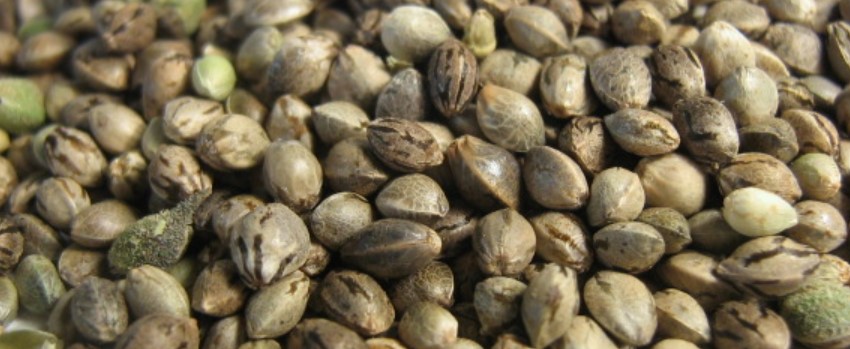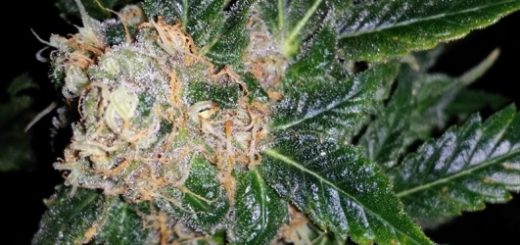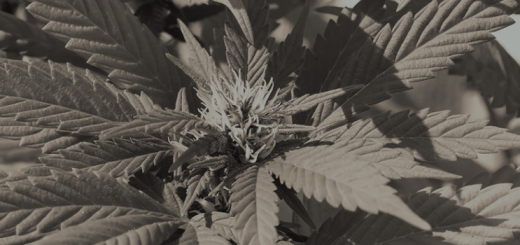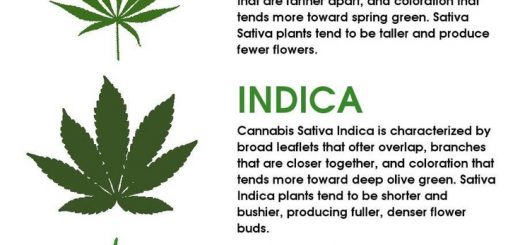How to Use a Marijuana Grow Calendar for Sunny Places – Bonza Blog
When we use a grow calendar, everything goes smoothly for us and for the marijuana crop. While it makes a big difference in cold regions, using it in sunny places makes the work even less stressful. This is because the calendar guides us on what task to complete in each month of the grow cycle.
When we commit to finishing each task on time, we equip the plants all that they need to thrive. Also, common problems that occur in each stage become easy to manage. As such, using the grow calendar keeps us on the right track which often results in a successful grow.
So, in this article, we will cover all the components of a cannabis grow calendar. This includes the outdoor length of days and temperatures of sunny regions in the US, including Hawaii. More importantly, we will look at the tasks that need to be completed from the start of the grow season to the end.
By learning how to use the calendar, we reduce all the complications that often come with growing weed. So, don’t hesitate to use one. Once the days get longer, start preparing to grow marijuana.
How to Grow Weed in Sunny Places
Before we dive in, take note that the averages in this grow calendar are based on Houston, Las Vegas, and Miami. With that, the southern West Coast experiences the most sun as well as the coolest temperature all year-round. On the other hand, central areas have the warmest summers and the southeast have the hottest spring and fall. Meanwhile, the shortest summer days are in Hawaii.
- February

February – Image powered by Marijuanagrowershq.com
The first month of the grow season is the least busy. Mainly, we will need to focus on the preparations for the upcoming months.
- Average Length of Days
In the southern regions, the average day length is 10 hours 30 minutes to 11 hours 40 minutes. In Hawaii, it is 11 hours 15 minutes to 11 hours 45 minutes.
- Average Temperatures
The average temperature is 49 to 80 degrees. In Hawaii, it’s 67 degrees to 81 degrees
- Tasks
The first task on the list for February is to start choosing the seeds. Since the frost disappear during this month, it’s the best time to start germinating. So, buy some quality seeds online and grow indoors until it’s warm enough to move them outdoors.
Seeds sprout well when the temperature is between 68 and 77 degrees. They also need 18 hours of sunlight which we can provide by using CFL lamps. Once they sprout, make sure check the length of day and temperature before putting them outside.
When it comes to what strain to buy, we can choose Sativas since sunny places have longer warmer days. If we want to grow Indicas, we must consider that they require a shorter grow cycle. So, study how much sun a strain needs before buying it.
While we are busy with the seeds, this is the best time to prep the soil. Start adding compost and worms to it so that it’s ready to use later.
- March

March – Image powered by Seedsupreme.com
In March, the hottest regions in the US start to feel like summer. This is good news for growers since it means that there is no more danger of frost. Hence, this is the best time to focus on sprouting the seeds.
- Average Length of Days
For this month, the average day length is11 hours 30 minutes to 12 hours 30 minutes. In Hawaii, it’s 11 hours 45 minutes to 12 hours 20 minutes.
- Average Temperatures
The average temperature is 50 to 81 degrees. In Hawaii, it’s 68 to 82 degrees.
- Tasks
If we already have seeds, we can begin sprouting them in the window sill. Since the days are not quite long enough yet, use a lamp to give them an extra hour to make sure they get at least 12 hours of light per day.
This is vital so that they won’t start flowering early, which often happens when they don’t get enough light. So, keep an eye on the young plants since we don’t want them to go off the grow schedule.
Next, if we want to use a mother plant, this is the best time to tend it. By the end of the month, it must be ready, so we can start growing the clones outdoors.
- April

April – Image powered by Marijuanaseedscenter.com
Many cannabis growers love how warm it gets in April which signals the lengthening of days. Except for Hawaii, we’ll notice that days get longer around the middle of the month. In fact, most southern areas will reach 13-hour days by the end of April.
- Average Length of Days
The average length of day in February is 12 hours 30 minutes to 13 hours 30 minutes. In Hawaii, it’s 12 hours 20 minutes to 12 hours 55 minutes.
- Average Temperatures
The average temperature is 55 to 84 degrees. In Hawaii, it’s 70 degrees to 83 degrees.
- Tasks
The warmer and longer days mean that we don’t need those lamps on the windowsill anymore. If the seeds are receiving close to 13 hours of sunlight, then they should sprout without problem.
However, if we live in the Southeast where the warmest spring takes place, then we must take the plants off the windowsill. In general, it’s better if we take them out and give them fresh air.
As a rule of thumb, it’s okay to let them sit outside during the day when it’s 70 degrees. But we must not forget to bring them indoors at night.
April is also the best time to start making clones from the mother plant we created in late February. The temperature is ideal to help the cutting grow some roots and develop.
- May

May – Image powered by Marijuanagrowershq.com
Spring arrives in May but in some places in the south, it already feels like summer. So, take out those plants and let them bask in the sunlight permanently.
- Average Length of Days
The average day length is 13 hours 10 minutes to 14 hours 15 minutes. Meanwhile, in Hawaii, it’s 12 hours 56 minutes to 13 hours 20 minutes.
- Average Temperatures
As spring settles in, the average temperature goes up to 60 to 87 degrees. In Hawaii, it’s 71 to 85 degrees.
- Tasks
For those who opt to grow auto-flowering seeds, we must start sprouting them by the middle of the month. By this time, the right amount of sunlight and temperature will guarantee a success grow.
If we execute this task in May, we’ll be ready to harvest them by the beginning of August. As to growers in Hawaii, avoid choosing strains that need more sunlight to grow. This is because Hawaiian summer days are the shortest in the country.
- June

June – Image powered by Assets.greenrushdaily.com
Outdoor marijuana plants grow the most in June, especially between the 18th and 24th. Because of the longer days and warm temperatures, expect the plant to increase in height and grow more leaves.
- Average Length of Days
The average day length is 14 hours 15 minutes to 14 hours 45 minutes. In Hawaii, it’s 13 hours 20 minutes.
- Average Temperatures
The average temperature is 60 to 91 degrees. In Hawaii, it’s 74 to 87 degrees.
- Tasks
Those who cultivate auto flowers will begin to see buds which signal that harvest time is fast approaching.
On the other hand, regular strains tend to grow more vigorously as mentioned earlier. Hence, the main task here is to make sure that they continue to grow well by optimizing the environment.
- July

July – Image powered by Cannabis-seeds-usa.org
July is the hottest month of the year where auto-flowers now produce large buds. Meanwhile, the regular strains may begin to show their first pistils. As such, it is high time to separate the male plants from the female.
- Average Length of Days
The average day length is 13 hours 30 minutes to 14 hours 20 minutes. In Hawaii, it’s 13 hours 5 minutes to 13 hours 20 minutes.
- Average Temperatures
The average temperature is 65 to 93 degrees and 75 to 88 degrees in Hawaii.
- Tasks
As the auto-flower growers wait for their crop to be ready for harvest, the regular growers are now facing a vital task. This involves taking out the pesky male plants.
To spot them, look for the flowerheads at the bottom of the side branches that resemble two small balls resting on a thin stem.
Once we see them, remove them carefully to avoid spilling any of the seeds. On the other hand, take good care of the females which will have drop-shaped calyxes and hairy white pistils protruding from them.
- August

August – Image powered by Ilovegrowingmarijuana.com
As the harvest season draws near, we need to be ready for the tasks at hand.
- Average Length of Days
The average day length is 12 hours 45 minutes to 13 hours 50 minutes. In Hawaii, it’s 12 hours 30 minutes to 13 hours 5 minutes.
- Average Temperatures
The average temperature is 65 to 95 degrees and 75 to 89 degrees in Hawaii.
- Tasks
It’s now time to harvest the auto-flowers that we planted in May. Overall, the process takes about 10 days from cutting to drying the buds. To dry them, hang the flowerheads upside down in a dark place to dry.
It’s important to avoid rushing this part to get quality buds. So, don’t mess with the temperature. After 10 days, test them for readiness by seeing if the branchlet cracks after bending it.
While many growers harvest in October, it may also be time to do it in August. This is because we need to harvest the weed before sunlight hours drop to 13.
And since Hawaii and the Southeast have shorter growing season, growers must choose strains that grow more quickly. Otherwise, they will enter the final flowering phase and die.
To prevent non-auto flowering plants from dying due to limited amounts of daylight, bring them indoors and use lamps. This will extend the growing season a little bit longer.
Meanwhile, it’s important to take care of those plants that are not ready for harvest yet. As such, we must protect them from the wind by using bamboo sticks as stabilizers.
Moreover, keeping them dry is important to prevent the formation of any mold or mildew. So, provide a cover or bring them inside if they are potted.
- September

September – Image powered by Ministryofcannabisblog.com
Temperature-wise, it’s hard to notice that Fall is just around the corner. However, by the end of the month, the days become shorter which are a clear indicator that the growing season is nearly over.
- Average Length of Days
The average length of day is 11 hours 50 minutes to 12 hours 50 minutes. In Hawaii, it’s11 hours 57 minutes to 12 hours 30 minutes.
- Average Temperatures
The average temperature is now lower at 64 to 89 degrees and 75 to 89 degrees in Hawaii.
- Tasks
The tasks for this month are a continuation of the ones from August. As the weed matures, we will notice that the color of the pistils and trichomes change. They grow darker and curlier. However, others may still need another month to fully develop.
- October

October – Image powered by Ilovegrowingmarijuana.com
As Autumn settles in, the outdoor growing season is officially over. While most plants have already bloomed, some may still be finishing up this month.
- Average Length of Days
In the harvest month, the average day length is10 hours 50 minutes to 11 hours 50 minutes. In Hawaii, it’s11 hours 20 minutes to 11 hours 55 minutes.
- Average Temperatures
The average temperature is down to 60 to 86 degrees, and 74 to 87 degrees in Hawaii.
- Tasks
If we have plants that are still growing, we must make sure to protect them from bud rot.
Oftentimes, the cold, wet temperatures cause this problem which can ruin the harvest. Those who live in the heartland of America are most in danger for this.
So, what do we do when we notice any signs of bud rot? Harvest the weed immediately. As any grower will confirm, some harvest is better than none.
Get a Great Harvest by Using a Marijuana Grow Calendar
Growing marijuana tends to be a tricky process, but not if we use a grow calendar. Essentially, it helps the grower know what to prepare for and when exactly to do it. Hence, it helps us organize the tasks based on priority and make sure that we accomplish them.
Without a doubt, early preparation goes a long way when it comes to planting cannabis. So, make it a point to learn the tasks that come with each month. Use a grow calendar and increase the chances of getting healthy plants that produce rich buds.




Recent Comments